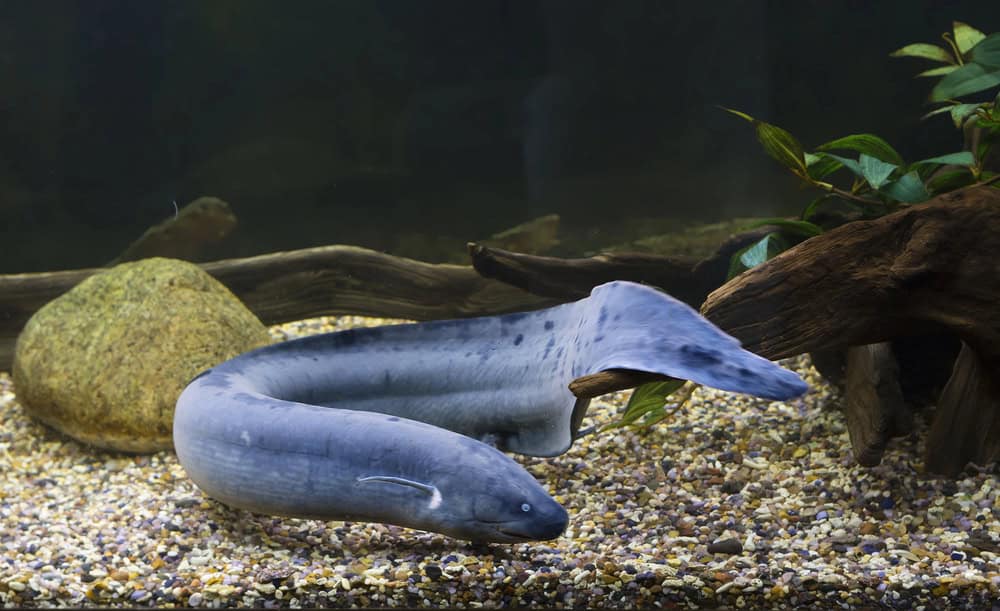In the vast realm of the animal kingdom, few creatures spark as much fascination as those that defy the boundaries of their environmental niches. Among these exceptional beings is the African lungfish, a remarkable fish that not only breathes air but can survive out of water for extended periods. This extraordinary capability has garnered attention from scientists and nature enthusiasts alike, eager to delve into the lungfish’s unique adaptation skills.
The Evolutionary Marvel

The lungfish belongs to a lineage that dates back nearly 400 million years. Its evolutionary roots provide insights into the transition from aquatic to terrestrial life forms. Unlike other fish, the lungfish’s anatomy includes a primitive lung system akin to that of terrestrial vertebrates, an adaptation that has enabled its unique respiratory abilities.
The Secret to Air Breathing

What sets the African lungfish apart is its use of lungs for respiration, supplemental to its gills. This dual respiratory system allows lungfish to extract oxygen directly from the air, a crucial evolutionary adaptation. During dry seasons, when aquatic habitats shrink or disappear, this ability becomes a lifeline, enabling them to survive and continue their life processes.
The Estivation Strategy

In response to droughts, lungfish enter a state of estivation, akin to hibernation in mammals. During this dormant phase, the lungfish secretes a mucus cocoon that encases its body, retaining moisture and shielding it from the harsh, dry conditions outside. This physiological slowdown reduces metabolic rates and conserves energy until favorable conditions return.
Amazing Survival Tactics

Lungfish have evolved remarkable behavioral adaptations to ensure survival. Beyond estivating, they have developed strategies like burrowing into mud and minimizing energy expenditure. These tactics enable them to survive without food and water for an astonishing duration, often spanning several months.
Habitat and Distribution

Found predominantly in Africa, the lungfish inhabits floodplains, rivers, and swamps. Its presence in these regions highlights its resilience and ability to thrive in environments subject to seasonal changes. The fish’s adaptability to varied aquatic landscapes exemplifies its evolutionary success.
Diet and Feeding Habits

As opportunistic feeders, lungfish consume a diverse diet comprising small fish, crustaceans, insects, and plant matter. This varied diet is vital for their survival, particularly during breeding seasons when nutritional demands increase. Their feeding habits reflect their adaptation to fluctuating food availability in dynamic habitats.
Reproductive Behavior

Lungfish are known for their intriguing reproductive strategies. During breeding, males construct and guard nests, displaying heightened territorial behavior. The parental care exhibited by male lungfish, who protect and aerate the eggs, is relatively rare among fish, highlighting the lungfish’s unique life history.
Lifespan and Longevity

In the wild, lungfish can live for several decades, a testament to their hardiness. Their impressive lifespan is attributed to their survival mechanisms and their low metabolic rates during estivation, which reduces physiological wear and tear over time.
The Genetic Puzzle

Genomic studies of lungfish have provided insights into vertebrate evolution. Their genetic makeup is a mosaic of traits shared with both aquatic and terrestrial species, offering a window into the genetic adaptations required for life on land. Scientists continue to study lungfish DNA to unravel evolutionary mysteries.
Current Conservation Status

While some lungfish populations are stable, others face threats from habitat destruction and climate change. Conservation efforts are crucial to safeguarding these ancient creatures. Protecting their habitats and understanding their ecological roles can prevent their decline and preserve biodiversity.
Human Impact and Interactions

Humans have interacted with lungfish in various cultural contexts, often regarding them as curiosities or integrating them into local lore. In some regions, they are fished for food, underlining the need for sustainable practices to balance human consumption with conservation.
The Future of Lungfish Research

Ongoing research into lungfish continues to uncover insights into evolutionary biology, physiology, and ecology. As scientists explore the implications of lungfish adaptations, these studies not only elucidate the past but also inform approaches to future conservation and environmental management.
In summary, the African lungfish stands as a testament to the resilience and adaptability of life forms. Their unique ability to survive out of water challenges our understanding of biological limits and underscores the marvels of evolution. As we continue to study these intriguing creatures, they remind us of the complex interplay between life and the environments that shape it.
- How Louisiana’s Brown Pelicans Were Saved from Extinction - June 29, 2025
- How Animals Express Emotions: What Scientists Are Discovering - June 29, 2025
- The Clever Ways Animals Outsmart Predators in the Wild - June 29, 2025
